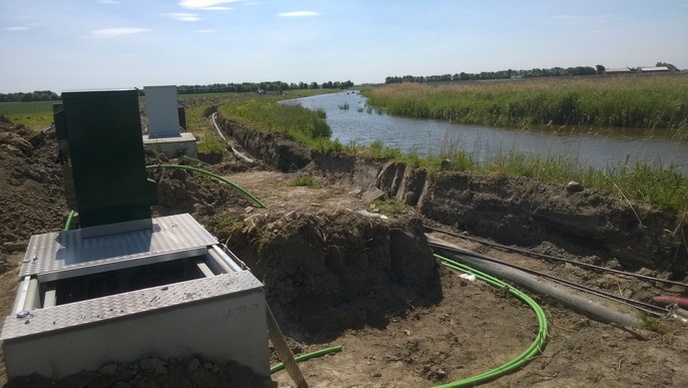Subsurface Water Solutions for stressed coastal regions
Worldwide, coastal regions are amongst the most economically productive and the most populated regions. The high demand this exerts on food supplies, as well as freshwater resources and ecosystems, puts these areas at risk of problems like seasonal water shortage, saltwater intrusion, and wetlands disappearance. And this situation is predicted to get even more pronounced in the decades to come, necessitating a step-change in water management and use, especially in freshwater storage and water reuse. SUBSOL (bringing coastal SUBsurface water SOLutions to the market), an EU-funded project, has successfully demonstrated the technical capacity of the subsurface to temporarily store and preserve freshwater to secure additional water supply during periods of shortages. The project developed a range of practical approaches to water storage and management (so-called Subsurface Water Solutions) that can be applied to resolve local and regional freshwater challenges. Developing a Subsurface Water Solution toolbox Subsurface Water Solutions (SWS) make use of the subsurface’s potential to store water. Water storage in the subsurface has been applied for many decades using Managed Aquifer Recharge (MAR) and Aquifer Storage Recovery (ASR) techniques. For example, to supply drinking water in the western part of the Netherlands, riverine water is temporarily stored in the dunes. The SUBSOL team focused on the development and demonstration of different technical concepts to store freshwater in coastal settings, where saline and brackish aquifers currently prevail. As project coordinator Dr Gerard van den Berg explains, “Recovery of previously stored freshwater is particularly challenging in coastal aquifers because freshwater and saline water will mix to a certain extent. Also groundwater flow may hamper recovery of previously stored water.” For this reason, not all aquifers are suitable for storing water and so SUBSOL developed concepts, based on the use of vertical or horizontal wells, and systems with single or multiple screens, which could maximise water storage and recovery rates. Testing various methods, SUBSOL scaled-up existing reference sites where concepts for water storage had already been successfully applied. As Dr Van den Berg elaborates, “Building on experiences from these reference sites, a number of replication sites were developed. Subsurface water solutions were tested under a variety of geological conditions, and purposes, for example for agricultural, drinking water, ecological and industrial applications, as well as water reuse.” The project in effect created a SWS design toolbox, offering details on the technical feasibility of different options, including: the ASR-Coastal (vertical wells with multiple screens), Freshmaker (based on horizontal wells with simultaneous extraction of freshwater and brackish water) and Freshkeeper (based on vertical wells with simultaneous extraction of freshwater and brackish water). As Dr Van den Berg says, “The toolkit is designed to help water managers design the best SWS system to meet their needs.” In terms of ensuring market acceptance of the solutions, SUBSOL collaborated right from the start with engineering companies as well as end users, such as members of the water industry or drinking water utilities. Additionally, besides testing subsurface water solutions under natural conditions, market studies were also carried out into worldwide opportunities. These have shown clear potential for the application of SWS not only in Northwest Europe and the Mediterranean region, but also in the Gulf of Mexico, Brazil, China, Singapore and the Gulf region. Pressing water problems call for radical solutions Water reuse is one of the most widely accepted approaches used to tackle the lack of freshwater for domestic use and irrigation. However, successful practices strongly depend on supply and demand, in terms of not only volumes, but also timing and quality. The subsurface provides an almost endless capacity for temporary storage and has the potential to protect the injected water from quality deterioration. “SUBSOL has demonstrated the successful application of Subsurface Water Solutions thanks to innovations in pre-treatment, water well designs and groundwater modelling and management,” Dr Van den Berg reflects. Follow up research and implementation will focus on the scaling up of SWS from small sized (2-30 ha) to intermediate sized systems (of approximately 250 ha in commercial systems already in construction) and on to regional scale water solutions (> 1 000 ha). This work is undertaken through public private partnerships, with research organisations and consultancy companies jointly developing SWS applications. In the meantime, SUBSOL leaves behind a knowledge base of data, information and experiences that it has made available to interested parties.
Keywords
SUBSOL, freshwater, subsurface, coastal, Subsurface Water Solutions, aquifer, wells, groundwater, brackish, storage

